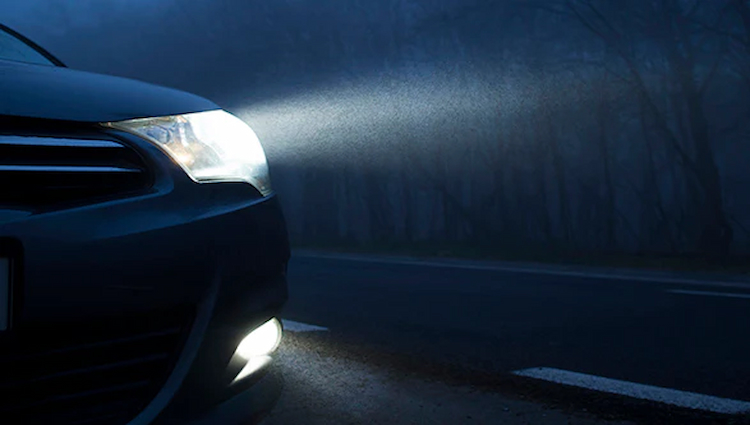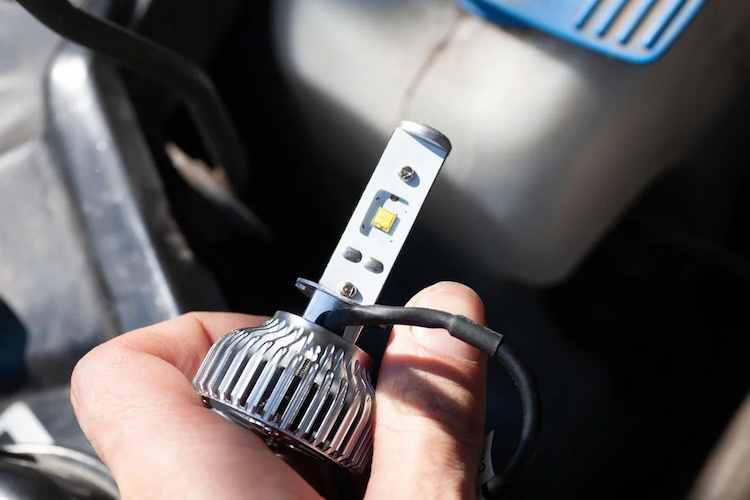While there’s been some debate as to whether LED headlight conversion kits are legal for use in Australia, swapping out older halogens for LEDs in all other uses is perfectly fine. The absence of any stipulated legislation means LED conversion kits aren’t necessarily illegal but haven’t been yet been ADR-approved. However, there’s nothing barring drivers from changing out interior dome lights, lights lining the door entry or footwells, those in the boot, lights illuminating number plates, as well as reversing lights and indicators. Any older halogens here can be replaced with a decent and inexpensive LED globe that runs much cooler, doesn’t present itself as an eyesore, and just looks more up-to-date.
Why Choose LEDs?
Source: uk.motor1.com
Considerably Longer Life Span
With the newer tech here, why not have a chance to see its full potential? The old LED vs halogen battle sees LEDs win on all fronts, and now that there are hundreds of light makers sourcing the tech, prices are more affordable than ever. LEDs will outlast at least 20 halogens, with rated globes running 50 000 hours or more compared to around 2500 hours in the best halogen out there. This is due primarily to how LEDs work and how they’re designed. Halogens require electricity to heat up a filament, whereas LEDs consist of semiconductor chips or diodes that light up when fed with the current. There are no heated elements as such, and one of the factors that hinder longer life spans. Another is that LEDs aren’t affected by vibrations or impact. And there are no moving parts that can break.
Lower Power Use
To reach the same brightness levels as LED globes for cars, halogens need to work hard. And they consume much more power. Around 80 per cent more, in fact. Maybe not alarming for one bulb, but assuming that a car has at least half a dozen lights just on the interior, this all adds up. To put things in perspective a typical 60W halogen bulb produces the same amount of light as a 6.6W T10 LED globe. The low power draw of LEDs opens up more possibilities and won’t be a drain on the electrical system in your vehicle.
Brightness and Colour Temperatures

Source: led-colight.com
LEDs can be calibrated more with more natural-looking light. This won’t cause glare or fatigue from prolonged use. For instance, swapping out the dome or reading lights fitted with halogens for LEDs will be easier on the eyes when looking at maps, reading or scrolling through phones. LEDs are smack-bang in the middle of the colour spectrum, shining a bright white or 4000-5000 Kelvins. This is the colour of sunlight at midday.
Brightness levels are measured in lumens. Even smaller LED globes for cars perform well without the typical power draw. 700 lumens is achieved in the most basic globes, while larger variants can get really bright, up to 1200 lumens. This can be too much for some applications, so choosing the right globe for the right application is important.
Safety and Performance
LEDs by design are also safer. They don’t emit infrared light or UV radiation (though minimal in halogens), don’t get hot and there’s no risk of bulbs bursting.
In addition, the light comes on instantly and maintains the same intensity until turned off. An LED globe is also less susceptible to temperature extremes and works optimally in both cold, mild or hot settings. Compare this to halogens where there can be some delay until full brightness is achieved, and flickering in lights nearing their end-of-use date. And ambient temperatures can drastically impact lighting performance.
Which LED Globes to Get?

Source: motor1.com
Replacing your existing halogens can be done with the right LED car globes. This is mainly based on location, the type of socket and external dimensions. Halogens can be changed in reversing lights, rear indicators, and cabin and door lighting. They can also be used for lights illuminating number plates.
Tubular or T bulbs are a more common option with a wedge base, taking the place of halogens in the same socket design. T10 wedge globes are smaller variants with very low power consumption, and colour temperatures calibrated to 4000K, and are ideally used in footwells and glove compartments. Larger T20 globes improve lighting performance in reversing lights, with higher output (over 1000 lumens) and more natural colour temperatures, at around 5000K. A similar role, but differing in design are the Bayonet (twist-and-lock) globes in BA designations. A popular example is the BA15 globes, with 900 lumens of output. Festoon LED globes are often used in place of screw-in bulbs and where lighting to the sides is preferred.
Most LEDs are single polarity, so no issues with putting them in the wrong way. What’s important for some vehicles though is that LEDs are CANbus compatible, to ensure that the lights communicate with your car’s computer and work properly. Globes that are not CANbus compatible can still be used (though not recommended) and will display a warning alert in the dash, even though the globe is working perfectly fine.

